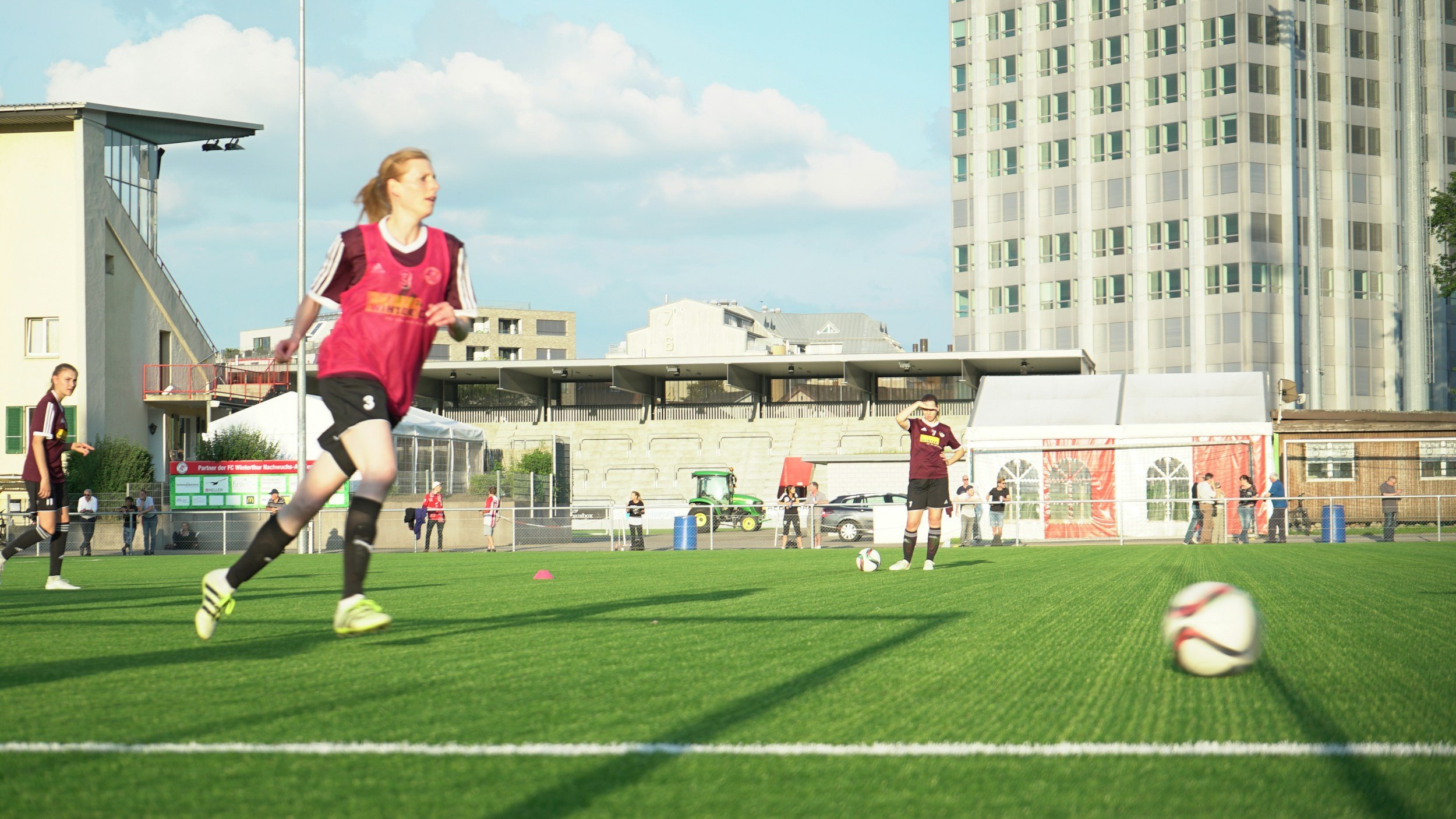Looking for a specific women’s football research topic?

Levelling the field? The English Football Association's promotion of their men's and women's national teams through Twitter
This study examines and compares the coverage of both the England men's and women's national football teams by their governing body, The Football Association (FA), immediately before, during and immediately following their respective 2020 and 2022 European Championships.

Inclusive, inviting, inspiring: Insights into the experiences of women's football fans in Australia and Germany
This article surveyed fans located in Australia and Germany to explore perceived differences in the culture of women’s football.

The soft power of Arab women’s football: changing perceptions and building legitimacy through social media
This study examines the capacity of Arab women’s football committees to engage soft power to challenge local and international perceptions of gender norms and gain acceptance in the region.

More than just a game’: family and spectacle in marketing the England Women’s Super League
This study employed observation at WSL matches and interviews with personnel involved in the League to identify how the FA conceptualised the WSL as a product in its first three years.

Towards Equal Rights in the Global Game? FIFA’s Strategy for Women’s Football as a Tightly Bounded Institutional Innovation
This article examines the FIFA women’s football strategy through a feminist institutionalist approach and offers insights into the bounded model of change endorsed by the Women’s Football Strategy.

Integrated women's football teams can attract larger stadium crowds
This article examines whether integrated women’s football teams (which may benefit from brand spillover effects, among other things) attracts larger crowds to their stadiums through empirical analysis.

“The American Outlaws Are Our People”: Fox Sports and the Branded Ambivalence of an American Soccer Fan at the 2019 FIFA Women’s World Cup
Drawing on fan studies, sports media studies, media industries studies, and participant observation of the American Outlaws, this essay analyzes specific aspects of the 2019 FIFA Women’s World Cup as televised by Fox Sports in the wider context of soccer’s evolving place within the American sports media marketplace.

The Football Association's Women’s Super League and female soccer fans: fan engagement and the importance of supporter clubs
A qualitative case study approach is utilized, via the use of semi-structured interviews to explore the demographics and motives of women who watch soccer at the elite level and their socialization into fan communities.

Uncovering injuries in Brazilian elite women's football: A prospective cohort study
This article examines injury profiles for women at 4 elite Brazilian clubs over the course of a season.

UEFA Women’s Elite Club Injury Study: a prospective study on 1527 injuries over four consecutive seasons
An article investigating the time-loss injury epidemiology and characteristics among women’s elite football players over four seasons in the UEFA Club season.

Predicting Risk Factors of Lower Extremity Injuries in Elite Women’s Football: Systematic Review and Meta-Analysis
This study identified and analyzed the risk factors of lower extremity injuries (LEI) in elite women football players to improve career and health outcomes.

She kicks: The state of competitive balance in the top five women's football leagues in Europe
This paper analyses competitive balance in the 'top five' women's football leagues in Europe longitudinally between 1997/98 and 2018/19.

Influence of quality of opposition in the creation of goal scoring opportunities in women's football
The aim of this study was twofold: i) firstly, to determine the influence of the criterion opponent quality on the offensive tactical behaviour of teams participating in the FIFA Women's World Cup France 2019 and, ii) on the other hand, to determine whether there were differences in criteria related to the start and development of ball possessions and their influence on the creation of scoring opportunities based on opponent quality.

The road to excellence in women’s football: a retrospective cohort study over the last 30 years with Swiss national players
This study examines the training (age at club entry, hours in club practice, free play, other sports) and environmental characteristics (popularity, media coverage, school and parental support) influencing the development of female Swiss national team players in elite football over a three-decade period

Injury Profile in Women’s Football: A Systematic Review and Meta-Analysis
This article does a systematic review of other research conducted on injury rates in women’s football generally. It examines typology and match vs. training rates.

Injuries in elite-level women’s football—a two-year prospective study in the Irish Women’s National League
An article examining types of injuries in the Irish women’s football league over a two year period.

“I'm a Referee, Not a Female Referee”: The Experiences of Women Involved in Football as Coaches and Referees
This article interviews women coaches and referees in the UK to discuss their experiences.

Sport Coaching and the Inclusion of Black Women in the United Kingdom
This article interviewed 8 Black women coaches in the UK to understand their experiences coaching.

Head coach tenure in college women’s soccer. Do race, gender, and career background matter?
This article uses data from 1977 until 2015 to analyze the impact of race and gender on coaching tenure in college women’s soccer.

Bolivian women as professional footballers:the voice and the feminism of the karimachus
In this article they interview Bolivian women’s footballers and explore their experiences. Despite a league being formed in 1993, but the formal acknowledgement of Bolivian women’s football was much latter.
